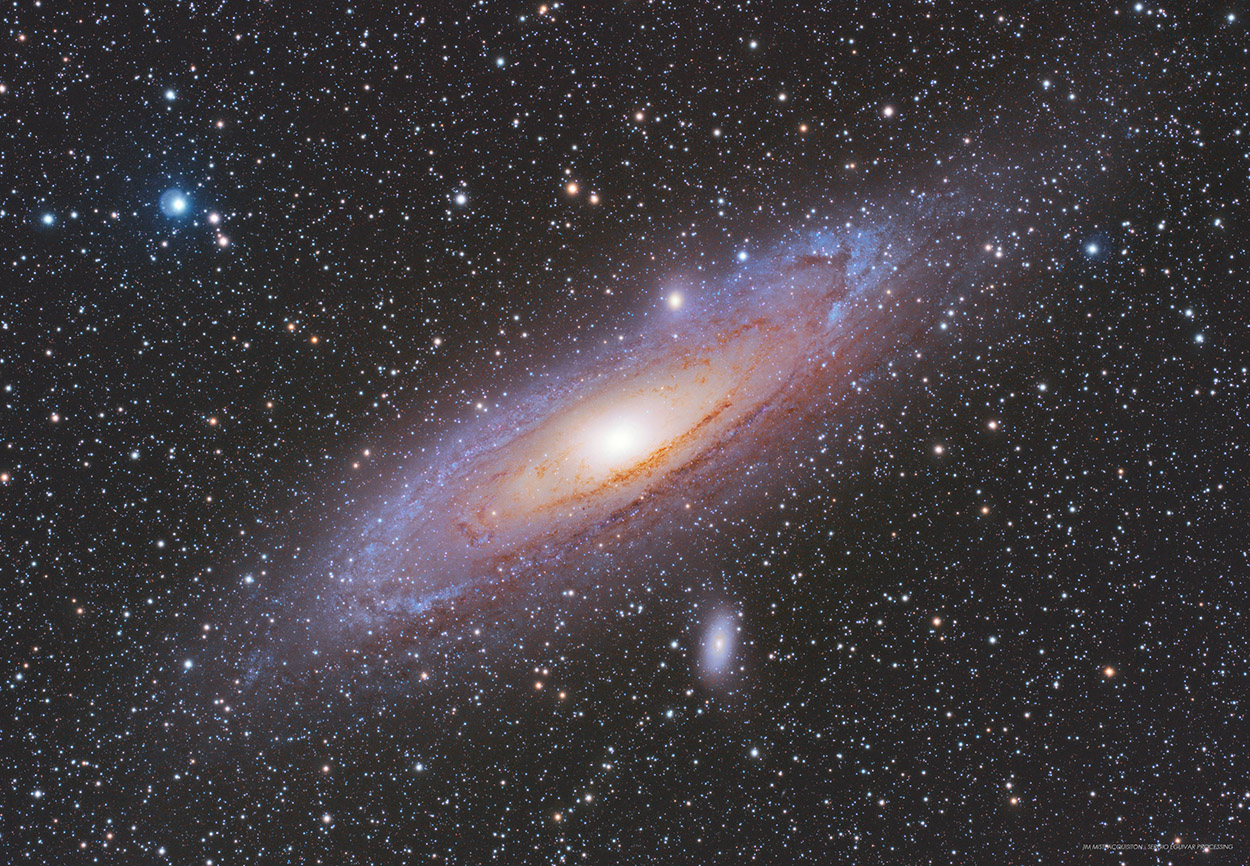
| HOME |
MESSIER 31 (aka ANDROMEDA GALAXY)
SPIRAL GALAXY IN ANDROMEDA
(Image centered at: ra 00 h:42 m / dec + 41º 16')
CLICK THE IMAGE FOR A HIGH RESOLUTION VIEW
Processing date: July 2023, Image Acquisition Jim Misti, Summer 2006 from Arizona, USA
DATA
TYPE: Spiral Galaxy
APPARENT DIAMETER: 178 arc minutes
APPARENT MAGNITUDE (V): 3.5
DISTANCE: 2.5 million light years
IMAGE INFORMATION
INSTRUMENT: Takahashi FSQ 106N (on loan courtesy of Steve Mazlin)
CAMERA: SBIG STL 11000 CCD camera
EXPOSURES: LRGB (60,20,20,20)
OBJECT DESCRIPTION AND IMAGE SESSION
The Andromeda Galaxy is one of the northern gems. Although it can be seen visually from Buenos Aires latitude, it is very hard to image because is only 15 degrees from the horizon at its peak.
After a hot summer and "la niña" effect, we had a cloudy autumn and winter, so I took the chance of processing Jim Misti Messier 31 raw files which are available at his site.
Messier 31 or the well known Andromeda galaxy is our nearest large neighbor galaxy, forming the Local Group of galaxies together with its companions (including M32 and M110 visible in the below image) and Messier 33.
Visible to the naked eye even under moderate conditions. I usually experience seen it with binoculars during our late winter and early spring. This object was originally named the Andromeda Nebula and is cataloged as Messier 31, M31, and NGC 224. Andromeda has a diameter of about 152,000 light years, much larger than our Milky Way which is 105,700 light years in diameter. The galaxy's name stems from the area of Earth's sky in which it appears, the constellation of Andromeda, which itself is named after the princess who was the wife of Perseus in Greek mythology.
The Milky Way and Andromeda galaxies are expected to collide in around 4 to 5 billion years, merging to potentially form a giant elliptical galaxy or a large lenticular galaxy.